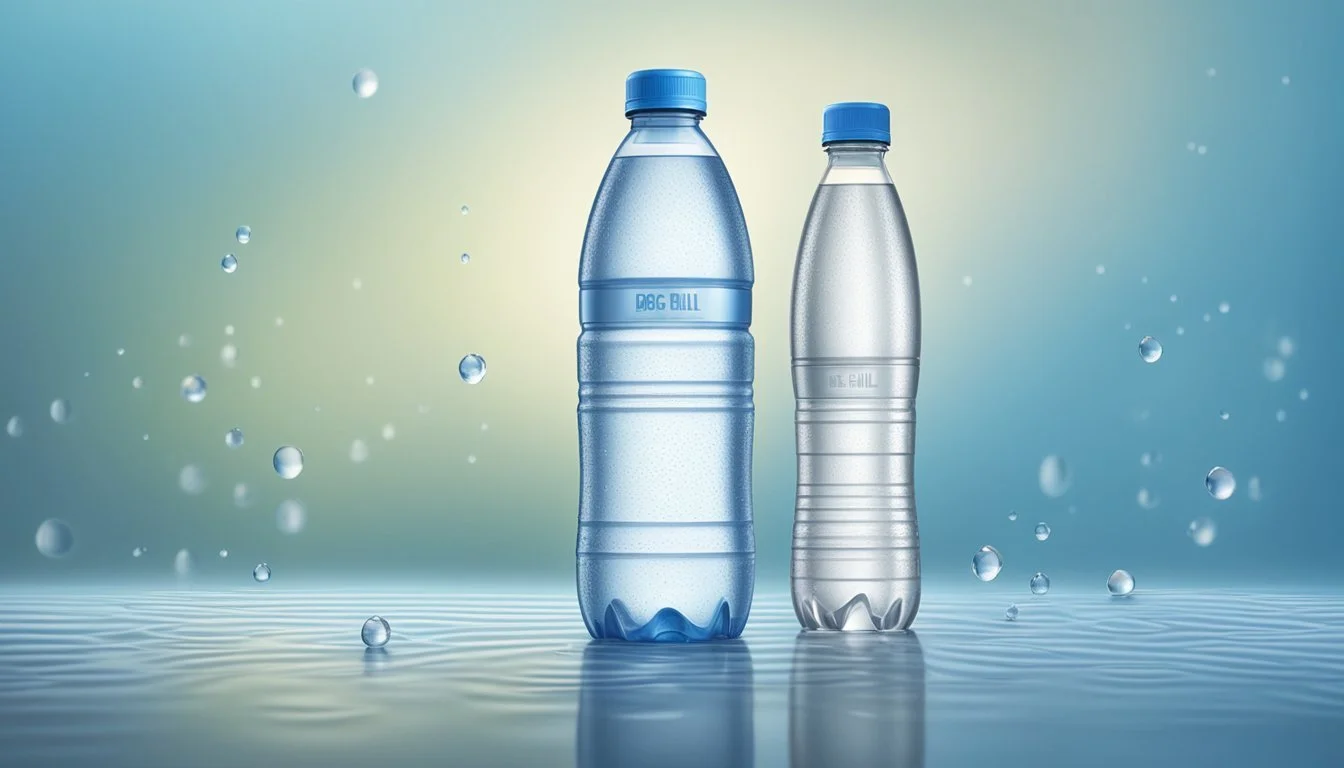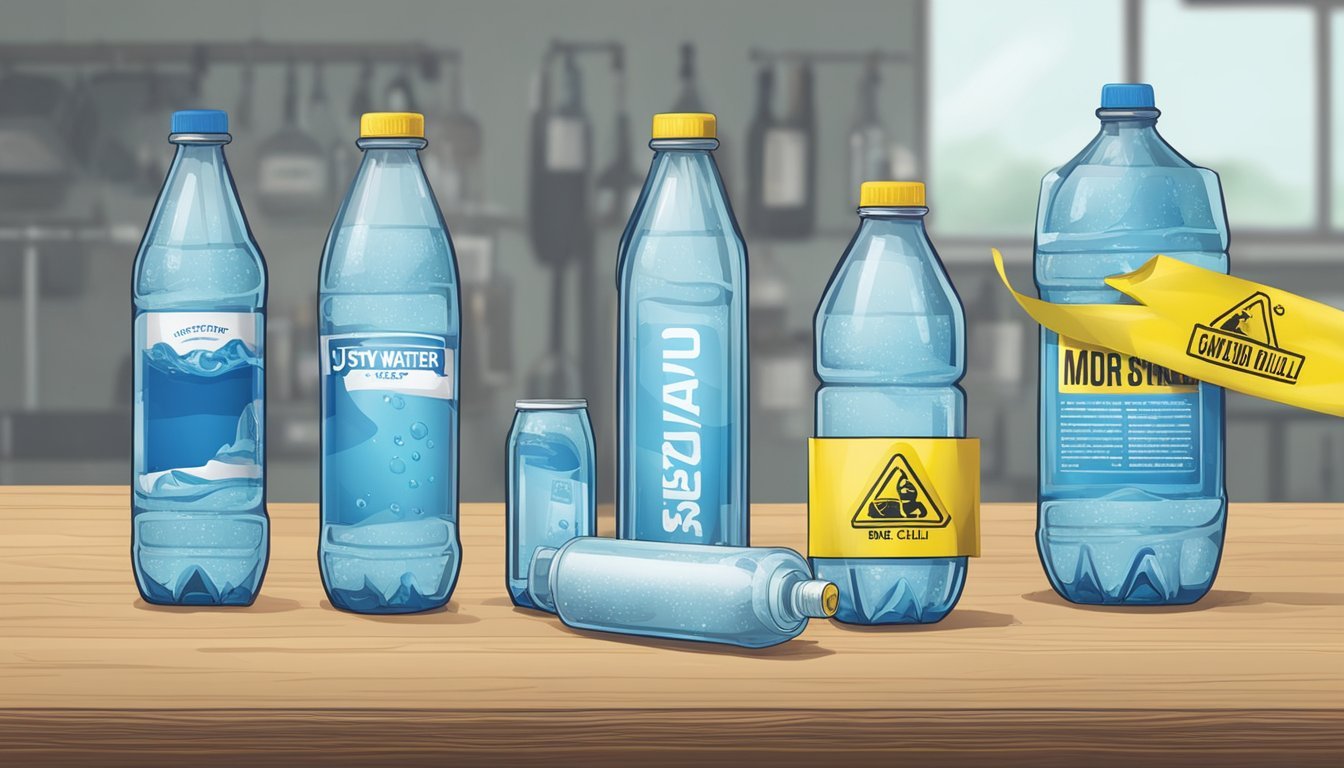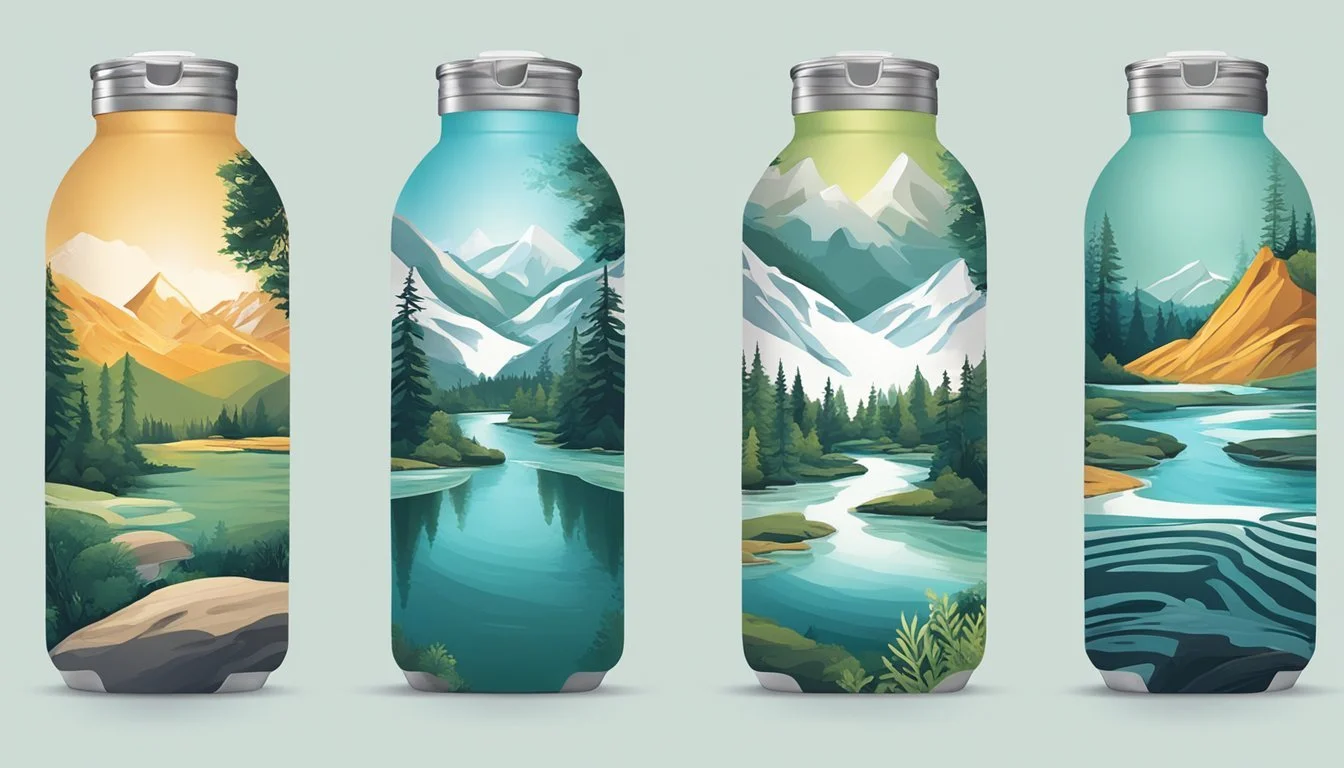Just Water vs. Big Chill
An Expert Comparison of Bottled Waters
Choosing the right bottled water can seem trivial, but the difference in quality, environmental impact, and taste can be significant. When comparing Just Water and Big Chill, multiple factors come into play, including packaging, purity, and sustainability. Just Water stands out for its eco-friendly packaging, utilizing a majority paper-based design with a bio-plastic cap, making it a more sustainable choice.
Big Chill, on the other hand, is recognized for its pure taste and widespread availability. While it may not boast the same environmental credentials as Just Water, its reliability and flavor profile have garnered a loyal following. Each brand offers distinct advantages that cater to different preferences and values.
Readers looking for a more sustainable option may lean towards Just Water, while those prioritizing taste and convenience might prefer Big Chill. Exploring these differences will help consumers make an informed decision about which bottled water best matches their needs.
The Rise of Bottled Water
Bottled water has become a ubiquitous commodity, capturing the attention of many households and businesses.
Its convenience and perceived purity have driven its popularity. People often choose bottled water over tap water due to concerns about contamination and taste differences.
According to research, nearly 64% of bottled water is merely repackaged tap water.
Consumers often believe that bottled water undergoes more rigorous filtration and safety checks. Yet, regulations for bottled water are not necessarily stricter than those for tap water.
The preference for bottled water has also been influenced by marketing strategies. Brands highlight it as a healthier and safer alternative.
Bottled water is often associated with superior quality and status. This perception has been significantly shaped by advertising and brand positioning.
In the last decade, the global increase in bottled water consumption has been significant. Innovations in packaging, such as bio-plastic caps and paper-based containers, aim to appeal to eco-conscious consumers.
However, the presence of microplastic particles in bottled water raises questions about its safety. In one study, 93% of bottled water samples contained microplastics originating from packaging materials.
Price is another crucial factor. While tap water is cost-effective, bottled water can be significantly more expensive. Despite this, many are willing to pay a premium for the perceived benefits.
The environmental impact is also a concern. The production and disposal of plastic bottles contribute to pollution, prompting a shift towards more sustainable packaging solutions.
The rise in bottled water consumption reflects changing attitudes and priorities regarding drinking water. Whether motivated by convenience, taste, or safety, bottled water continues to grow in popularity.
The debate between bottled water and tap water highlights differing views on safety, cost, and environmental responsibility.
Understanding Water Quality
When comparing bottled waters like Just Water and Big Chill, several key factors should be considered. These include pH levels, alkalinity, and mineral content, as they directly impact taste and health benefits.
pH Levels and Alkalinity
pH levels measure the acidity or basicity of water. Most bottled waters have a pH ranging between 6.5 and 8.5. Alkaline water, with a pH above 7, is often sought out for its potential health benefits, including neutralizing acid in the body and improving hydration.
Just Water emphasizes a pH balanced approach, often sitting around 8.0, promoting a smoother taste. Big Chill might vary but typically maintains a neutral pH, focusing on purity. The pH level can affect taste, with higher pH waters sometimes tasting smoother and softer.
Mineral Content and Taste
Mineral content, such as calcium, magnesium, and potassium, influences both the taste and health benefits of bottled water. Naturally alkaline waters, such as some natural spring waters, often have a higher mineral content.
Just Water sources spring water and maintains essential minerals, contributing to a slightly sweet and smooth taste. Big Chill, known for its pure, clean profile, may lack some minerals, leading to a less pronounced taste.
Mineral-rich water can offer significant health benefits, including supporting bone health and metabolic functions. The choice between mineral-heavy water and purer water depends on personal preference and health considerations.
By examining pH levels and mineral content, consumers can make informed choices that cater to their taste and health preferences when selecting between Just Water and Big Chill.
Packaging Matters
Choosing the right bottled water often involves scrutinizing the materials used in packaging. Different materials like plastic, paper, glass, and aluminum each have unique advantages and disadvantages, particularly concerning recyclability and environmental impact.
Plastic: Pros and Cons
Plastic is a common material for bottled water due to its lightweight and cost-effective properties. It's easy to transport and reduces shipping costs.
However, plastic bottles often raise environmental concerns. Some types can leach chemicals if not BPA-free. Even though they're recyclable, many plastic bottles end up in landfills or oceans, contributing to pollution. Moreover, the production process itself is energy-intensive and relies heavily on fossil fuels.
Alternative Materials in Bottling
Boxed Water and Just Water offer innovative alternatives to traditional plastic bottles. Boxed Water utilizes a blend of 74% paper, 1% aluminum, and 25% plastic film to maintain integrity and waterproofing. Just Water emphasizes a majority paper-based design with a bio-plastic cap.
Glass bottles present a viable option too. They are entirely recyclable and chemically inert, ensuring no leaching. Their weight and fragility, however, pose significant transport challenges. Aluminum, being lightweight and infinitely recyclable, emerges as a strong contender for sustainable packaging.
Recyclability and Environmental Concerns
Recyclability varies significantly between materials. Plastic bottles can be recycled, but the rates of recycling are disappointingly low. Paper-based bottles like those from Boxed Water are considered sustainable, sourcing from FSC-certified forests.
Glass and aluminum bottles generally enjoy higher recycling rates. Aluminum, in particular, is notable for its high recyclability, often being repurposed into new cans with minimal waste. Boxed Water’s use of renewable resources and efforts to minimize plastic content highlights a shift towards more environmentally-conscious packaging methodologies.
Health and Safety Considerations
Both Just Water and Big Chill prioritize safety and hydration, but there are key differences in their approach to contaminants and health benefits.
Contaminants and Safety Standards
Just Water is committed to reducing environmental impact and uses plant-based packaging. Testing for contaminants is rigorous, ensuring safety for consumers. They strive to meet and exceed EPA standards, reducing lead and other harmful chemicals.
Big Chill also adheres to EPA safety standards but faces scrutiny for potentially higher levels of contaminants. While still considered safe for adults, it may pose risks for sensitive groups like children.
Consumers should check for any recalls or recent safety reports to stay informed about their chosen brand.
Hydration and Health Benefits
Just Water offers benefits beyond basic hydration. Its balanced mineral content supports a healthy diet and overall wellness. The plant-based packaging further reduces the risk of plastic-related chemicals contaminating the water.
Big Chill provides standard hydration benefits, but its potential contaminants might diminish health advantages. Despite being inexpensive, it's essential to weigh the trade-off between cost and potential safety concerns.
Both brands effectively hydrate but differ in their approach to health and safety, impacting their suitability for various consumers.
Environmental Impact of Bottled Water
Bottled water production and consumption have significant environmental implications. Key areas include its carbon footprint, sustainability efforts by different brands, and the persistent issue of microplastics.
Carbon Footprint of Water Brands
Bottled water has a considerable carbon footprint. The entire process, from extraction to transportation, impacts the environment. Just Water and Big Chill differ in their carbon emissions due to their sourcing and production practices.
Extraction: Both brands source water differently. Just Water uses local natural water resources, reducing transportation emissions, whereas Big Chill often relies on distant groundwater sources.
Packaging: Packaging materials like PET plastic and glass contribute to the carbon footprint. Just Water emphasizes renewable materials, using plant-based plastic, whereas Big Chill sticks to traditional plastic bottles.
A study noted that bottled water can have an environmental impact 3,500 times greater than tap water.
Sustainability Initiatives
Many bottled water companies claim green practices, but discerning genuine sustainability from greenwashing is critical.
Just Water: This brand focuses on renewable resources and reduced plastic use. Their bottles are composed of 82% renewable content.
Big Chill: While Big Chill advertises eco-friendly goals, the specifics of their sustainability practices are less transparent. The brand often uses typical plastic bottles, raising questions about their true environmental commitment.
Sustainability also involves waste management. Just Water has active recycling programs, aiming to lower environmental pollution.
The Challenge of Microplastics
Microplastics pose a significant challenge in bottled water. Research has shown that a large percentage of bottled water contains microplastic particles originating from packaging.
Prevalence: A study found that 93% of bottled water samples worldwide contained microplastics. This contamination not only affects health but also contributes to environmental degradation.
Impact: Continuous consumption and disposal are problematic. These microplastics eventually end up in oceans and soils, affecting both marine and terrestrial ecosystems.
Addressing microplastic contamination requires industry-wide changes in packaging and stricter regulations to ensure cleaner, safer water for consumers and the planet.
Convenience vs. Sustainability
When selecting between Just Water and Big Chill, convenience often influences consumer choices. Just Water can be found in many grocery stores, making it easy to purchase during regular shopping trips. Its packaging is designed to fit easily into a backpack or purse, adding to its convenience.
Big Chill offers its water in both plastic bottles and stainless steel options. The plastic bottles are lightweight and disposable, while the stainless steel bottles are reusable, ideal for those aiming to reduce waste. Reusable bottles can be a bit heavier but provide long-term sustainability benefits.
Aspect Just Water Big Chill Availability Widely available in stores Available in stores and online Type of Bottle Majority paper with bio-plastic cap Plastic and stainless steel Reusability Single-use Reusable stainless steel option
In terms of sustainability, Just Water uses a blend of 74% paper, 1% aluminum, and 25% bio-plastic. This composition reduces reliance on traditional plastic, lowering its environmental footprint. Big Chill's reusable stainless steel bottles align with sustainability goals, offering a longer lifespan compared to single-use bottles.
Consumers face a trade-off. Convenience can lead to choosing lightweight, easy-to-carry options. Sustainability may drive decisions toward reusable or more eco-friendly packaging.
Grocery stores play a role in this dynamic. The availability of sustainable options in easily accessible locations may encourage more eco-friendly choices. Shoppers can influence the market by opting for products that align with their values on sustainability.
Brand Profiles
This section examines the core characteristics and distinctions between Just Water and Big Chill. The focus is on packaging, sourcing, health benefits, and environmental impact.
Just Water Analysis
Just Water uses plant-based packaging, which is notable for being environmentally friendly. The packaging consists of 82% renewable materials, integrating sugarcane-derived plastic and certified paper sourced from responsibly managed forests.
Sourced from Glens Falls, New York, Just Water claims to have a neutral pH level of around 8, making it slightly alkaline. This is beneficial for individuals seeking pH-balanced water options.
In terms of taste, Just Water does not have a significant mineral presence but offers a clean and crisp hydration experience. Priced competitively, it is one of the more affordable sustainable bottled waters available.
Big Chill Analysis
Big Chill is marketed as purified water. The brand uses a rigorous multi-step filtration process to ensure purity. It targets consumers who prefer minimalism in their bottled water, without adding minerals or other substances.
The brand uses standard plastic bottles, impacting its environmental footprint compared to more sustainable options like Just Water. Consumers often cite a lack of aftertaste as a positive aspect of Big Chill, lending to a smoother drinking experience.
Despite disadvantages in its environmental approach, Big Chill maintains a strong presence due to its affordable pricing and straightforward, purified water offering.
Comparison with Major Water Brands
Just Water's environmentally conscious approach stands out in the market when compared with other brands like Aquafina, Dasani, and Pure Life, which primarily use standard plastic bottles. Big Chill, meanwhile, ranks similarly with brands like Aquafina and Dasani in terms of purification processes.
Evian and Fiji enjoy a reputation for naturally occurring minerals and exotic sourcing (the French Alps and Fiji islands, respectively). They often come at a higher price point and utilize plastic bottles, which aren't as eco-friendly compared to Just Water.
Brands like Voss and Mountain Valley use glass bottles, appealing to a market that prioritizes both taste and aesthetic appeal. Just Water’s plant-based packaging offers a middle ground between plastic and glass.
Additionally, brands such as Ethos Water and Boxed Water Is Better also focus on environmental sustainability, similar to Just Water, but with different packaging approaches.
In terms of pricing and availability, Just Water and Big Chill make bottled water accessible to a broader audience, versus more premium brands that come with higher costs.
Consumer Choices and Insights
When choosing between Just Water and Big Chill, it's essential to consider both the cost of convenience and the importance of making informed decisions based on health, environmental, and economic factors.
The Cost of Convenience
Consumers often prefer bottled water for its convenience. Just Water offers a competitive price, particularly in the low-cost segment, while using a plant-based packaging material that includes minimal plastic, aligning with environmental concerns.
Big Chill, on the other hand, tends to use conventional plastic containers, which may be less expensive but raise environmental and health concerns related to plastic usage.
Just Water also supports sustainability through its packaging, which can be a significant factor for environmentally-conscious buyers. Despite this, the overall affordability can make both brands appealing depending on the consumer's priority on cost versus environmental impact.
Making Informed Decisions
Consumers must assess factors like water quality, safety, and potential health benefits. Just Water highlights the use of safe materials and a commitment to lower environmental impact, making it appealing for those prioritizing eco-friendliness and safety.
Big Chill focuses on providing reliable, safe drinking water, often verified by the FDA and compliant with EPA standards.
Considering factors like the presence of beneficial minerals such as potassium and magnesium can also influence choices. Water filtration options, like a Brita pitcher, might serve as an alternative for those seeking to avoid single-use bottles.
Water sommeliers and organizations like the Environmental Working Group provide insights into water quality and safety, helping consumers make informed choices about their preferred brands.
More About Just Water
Core Hydration vs Just Water: Which Bottled Water is Better?
Icelandic Glacial vs Just Water: Which Bottled Water is Better?
Just Water vs Aqua Carpatica: Which Bottled Water is Better?
Just Water vs Cascade Mountain: Which Bottled Water is Better?
Just Water vs Crystal Geyser: Which Bottled Water is Better?
Just Water vs Hawaii Volcanic: Which Bottled Water is Better?
Just Water vs Hawaiian Springs: Which Bottled Water is Better?
Just Water vs Kirkland Signature: Which Bottled Water is Better?
Just Water vs Mountain Valley Spring Water: Which Bottled Water is Better?
Just Water vs Nestle Pure Life: Which Bottled Water is Better?
Just Water vs Richard's Rainwater: Which Bottled Water is Better?
Just Water vs San Pellegrino: Which Bottled Water is Better?
Just Water vs Solan de Cabras: Which Bottled Water is Better?
Just Water vs Talking Rain AQA: Which Bottled Water is Better?
Just Water vs Whole Foods 365: Which Bottled Water is Better?
Just Water vs Whole Foods Italian Still Mineral water: Which Bottled Water is Better?
More About Big Chill
Big Chill vs Kirkland Signature: Which Bottled Water is Better?
Big Chill vs Talking Rain AQA: Which Bottled Water is Better?
Big Chill vs Whole Foods 365: Which Bottled Water is Better?
Cascade Mountain vs Big Chill: Which Bottled Water is Better?
Hawaii Volcanic vs Big Chill: Which Bottled Water is Better?
Hawaiian Springs vs Big Chill: Which Bottled Water is Better?
Icelandic Glacial vs Big Chill: Which Bottled Water is Better?
Mountain Valley Spring Water vs Big Chill: Which Bottled Water is Better?
Nestle Pure Life vs Big Chill: Which Bottled Water is Better?
Richard's Rainwater vs Big Chill: Which Bottled Water is Better?
Solan de Cabras vs Big Chill: Which Bottled Water is Better?
Whole Foods Italian Still Mineral water vs Big Chill: Which Bottled Water is Better?





